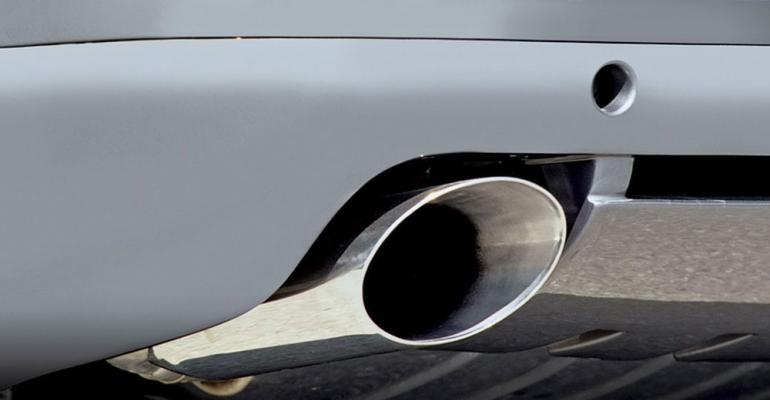BRUSSELS – In addition to fuel efficiency, tire noise and carbon-dioxide emissions, auto makers soon may be required to provide details on the noise levels of their cars, if proposed legislation is approved by the European Union.
The move is backed by the European Parliament, the EU’s democratic assembly, whose members (MEPs) say such a requirement “may influence purchasing decisions and accelerate the transition to a quieter vehicle fleet.”
However, MEPs also favor several aments to the law that, if agreed upon by the EU Council of Ministers, representing the member states, would see the noise levels from cars reduced by 6 decibels, or (dB(A), from the current value of 74 dB(A), within six years of the law coming into force.
This would ensure a softer landing for European auto makers than the initial version of the regulation proposed by the European Commission, the EU’s executive body in charge of drafting legislation, even though the reduction is larger in the long run.
Under the original version of the legislation, car manufacturers would have had to cut the noise levels of their vehicles by 2 dB(A) immediately. Another reduction of 2 dB(A) would have come in the following three years.
Even so, the European auto makers are not happy.
“Europe already has the most stringent limit values in the world today,” Ivan Hodac, secretary general of the ACEA European auto makers group tells WardsAuto. “It will be extremely difficult, if not impossible, to meet some of the new limit values proposed by the European Parliament.”
The ACEA last year asked that auto makers have six years to reduction average noise levels by 2 dB(A), he says.
Finnish Green MEP Satu Hassi does not believe the noise proposals are that tough though. “Every third car meets the proposed limits now,” she said during a Feb. 5 debate on the issue at the European Parliament plenary session in Strasbourg. Greens and health campaign groups in Brussels claim the parliament has made life too easy for the auto sector.
“(MEPs) put the scaremongering of the automotive industry above the health of citizens,” Cecile Toubeau, vehicles officer at the Brussels-based green transport group Transport& Environment, says in a statement on the European Parliament vote.
Last year, the T&E group accused the MEP in charge of the legislation, Czech Conservative Miroslav Ouzky, of copying the noise-reduction limits from a proposal authored by German auto maker Porsche.
“They tried to create the impression that I am an agent for the automobile industry and that I am paid by this industry,” Ouzky says during the debate in the parliament. He labels the allegations brought by T&E as false and that the accusations have delayed the vote on the law by several weeks.
“The compromise that I proposed reduces the noise levels of motor vehicles and at the same time allows the car industry to handle this technical difficult task,” Ouzky argues.
“We have to be aware that we are not just voting on the impact of noise on human health, but also about the impact of our decisions on 15 million jobs in Europe, which are directly or indirectly employed in the car industry in Europe.”
One amendment agreed to by the parliament that Ouzky does welcome is that vehicle noise should not be measured solely by the vehicle’s output in isolation.
MEPs agreed more sources should be taken into account when calculating how noisy a vehicle actually is. These include differing road surfaces, driving style and traffic management. For instance, noise could be reduced by synchronising traffic lights so cars do not stop and start many times on a stretch of road.
“I am convinced that this legislation should also look into the issue of road surface, aerodynamic surface and traffic control,” Ouzky says.
Parliament’s amendments do ask the EC to publish “silent road guidelines” that would instruct local authorities how they could reduce noise on their roads. Additionally, EU countries might be requested to provide information on the quality of their road surfaces, enriching data used in noise level maps that EU governments have to compile under another EU law.
An explanatory memorandum to the law penned by the parliament says the most straightforward measure to reduce road noise levels is to change the road surface.
“Existing types of asphalt, such as whisper asphalt, asphalt with noise-reducing properties or noise-optimized asphalt, employed as part of a holistic approach combining a series of simple construction measures, can already be used to reduce noise levels by 10 db on a local basis,” the draft legislation says.
However, the EU cannot ask its member countries for such a large financial undertaking at this moment, given their governments are under tough budget restraints. So auto makers look to be the first in line to pay for a quieter world.
The vehicle-noise legislation still must be agreed upon by the EU Council of Ministers before it can come into force.




